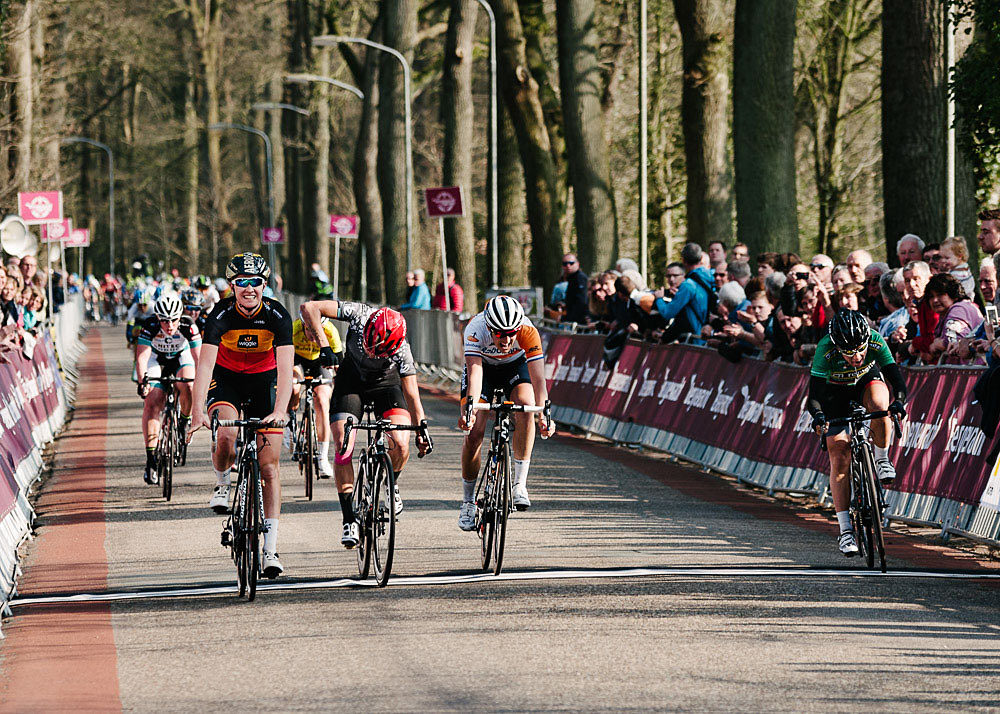2016 Women's WorldTour: Rules, organizers' requirements and live broadcasting
New media packages to develop ROI for sponsors of women's cycling






The Women’s WorldTour, which is set to begin in 2016, will see longer races, more varied racing and better coverage for the women’s peloton, according to an updated document from the UCI. There are still many details to iron out, such as which races will be involved, but this is the first major information released since the initial announcement was made earlier this year.
Longo Borghini: I dream of women's cycling being as professional as the men's
Longo Borghini calls for better TV coverage after women’s Tour of Flanders win
Andrea Marcellini eyes California for new women's pro series
Women's news shorts: Winning weekend for Guarischi, Cromwell video diaries
Women's news shorts: Armstrong, Abbott to race women’s USA Pro Challenge
The WorldTour will replace the current World Cup system, which consists of 10 one-day races. The new series will take part over 30 race days with a mixture of one-day and stage races throughout the calendar. The UCI have not opened up the bidding process for race organisers, so the exact make-up of the calendar is still unknown. However, it is expected that most of the current World Cup races will move over. Other races expected to make the cut are the Giro Rosa, Strade Bianche, La Course by La Tour and the Tour of California.
Under the new regulations, the maximum stage distance rises from 130 to 140 kilometres with the average stage distance jumping from 100 to 120 kilometres. Races are allowed to apply for special dispensation to have longer stages, as the Women’s Tour of Britain did earlier this season. Prize money is also set to rise for the WorldTour races.
It won’t be until 2017 that we could see a similar tiered system like the one that the men’s teams have, with only the top teams competing on the WorldTour. For the first season, the UCI will take a reading of the rankings on January 10th – as they currently do for the World Cup. For one-day events, the top 20 teams will automatically gain a place, while it is only the top 15 for stage races. Organisers can then invite additional teams, including national squads.
As previously, teams for one-day races must consist of up to six riders and no fewer than four. For stage races, that becomes seven or eight with no fewer than five. The points available for the winning overall – in one-day or stage races - remains 120, and 25 points are available for the victor of stages and half stages. The leader of a race will get six points for every day in the lead, while the overall WorldTour leader will also earn six points for each round she retains that lead. Additionally, points will also be awarded for a young rider’s competition, with the top three from each race taking 6, 4 and 2 respectively.
Other changes, such as teams being registered with the UCI rather than their national federation, will come in 2017.
Improved media requirements to develop ROI for sponsors of women’s cycling
Get The Leadout Newsletter
The latest race content, interviews, features, reviews and expert buying guides, direct to your inbox!
The UCI’s new Women's WorldTour requirements are specific instructions about what teams must be invited to one-day races and stage races, and the range of media from the event that must be provided to the public. Such requirements will take effect on January 1.
The UCI stipulates that race organisers that become a part of the series must adhere to the specific invitation rules, as described above, and they must also provide promotional media from each event on the Women’s WorldTour. The UCI requires race organisers to "sign a contract with the UCI, governing, inter alia, the audio-visual broadcasting rights, marketing rights and the material organisation of the events."
Organisers selected to be part of the Women's WorldTour are expected to provide live TV or streaming of the event, or a highlights package, among other promotional media.
Kristy Scrymgeour, owner of the successful UCI women’s team Velocio-SRAM that is set to fold at the end of the season in part due to a lack of funding, told Cyclingnews that she believes the new media requirements are key to improving women’s race coverage, financial support from sponsors and will provide teams and brands with a clearer and bigger return on their investment (ROI).
"Creating a WorldTour where race organisers are required to really actively promote the race and broadcast live, I think there’s a lot of positive changes happening there," said Scrymgeour, who sits on the board of the Women’s Commission at the UCI.
The Women’s WorldTour will effectively replace the World Cup, which ran from 1998 to 2015, and consisted of 10 one-day races this year. However, Scrymgeour believes there wasn’t enough promotion of the World Cup series, and in turn, not enough ROI for brands sponsoring the sport.
"The World Cup wasn’t utilized as well as it could have been," Scrymgeour said. "Now, if you want to be part of the WorldTour then you have to take steps to film your race, stream it live, and broadcast it, provide footage for a highlight package.
"The teams will get those broadcast stats and viewership numbers and they can go back to their sponsors for future years and say; this is when we were on TV, this is how many people watched, and that’s just not something that we’ve been able to do in the past."